- +86-13775339109
- Jessica@nq-fiberglass.cn
- No 61 Fangxian, Danyang, Jiangsu
In today’s world of advanced materials, carbon fiber tubes have emerged as a game-changer across multiple industries. Known for their exceptional strength-to-weight ratio, stiffness, and durability, these tubes are widely used in aerospace, automotive, sports equipment, robotics, and construction. From lightweight aircraft components to high-performance racing bicycles, carbon fiber tubes provide unparalleled performance compared to traditional materials like steel and aluminum.
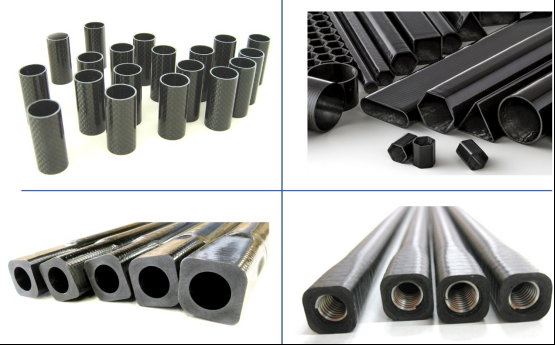
Several key advantages drive the growing adoption of carbon fiber tubes:
As industries prioritize efficiency, sustainability, and high-performance materials, carbon fiber tubes are becoming the go-to choice for engineers and manufacturers worldwide.
By the end of this guide, you’ll understand why carbon fiber tubes are revolutionizing multiple industries and how to choose the right type for your needs.
Now, let’s dive into the details! 🚀
Carbon fiber tubes are advanced composite materials made from carbon fibers combined with a resin matrix to create a lightweight yet strong and durable structure. They are favored in aerospace, automotive, and sports industries for their impressive strength-to-weight ratio. Let’s explore how carbon fiber tubes are made, the types available, and the variations in texture and design.
Creating carbon fiber tubes involves laying carbon fiber sheets in a tube shape and then curing them with a resin. There are two main fiber orientations used in manufacturing these tubes:
Different manufacturing techniques result in varying characteristics and performance. The most common types are:

The texture of the carbon fiber fabric used in the tube affects its visual appearance and physical properties. There are various weaves and patterns commonly used in carbon fiber tube manufacturing:
Type | Strength | Stiffness | Flexibility | Applications |
Unidirectional | Up to 3.5 GPa | High (230 GPa) | Low | Aerospace, structural beams, arrow shafts |
Woven | Up to 2.5 GPa | Moderate (200 GPa) | Moderate | Bicycle frames, automotive parts, general industrial uses |
Braided | Up to 3.0 GPa | Moderate (210 GPa) | High | Robotics, prosthetics, aerospace components |
Carbon fiber tubes come in various sizes, shapes, and variations, depending on the intended application. Some of the standard features include:


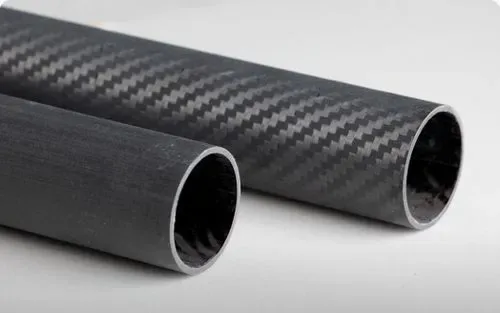
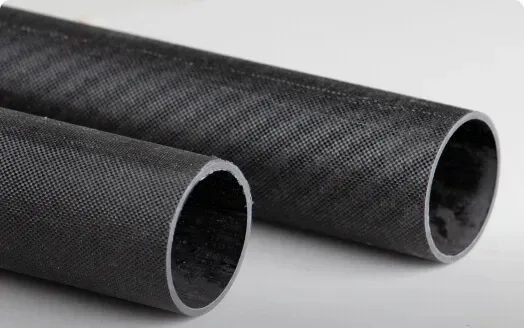
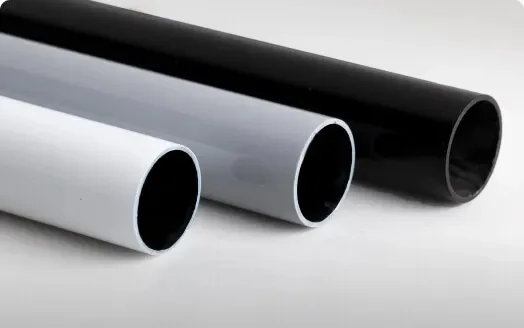
The manufacturing process of carbon fiber tubes involves several carefully controlled steps that ensure the final product is strong, lightweight, and durable. Here’s a breakdown of the key stages in making carbon fiber tubes:
The first step is choosing the type of carbon fiber that best suits the application. Carbon fibers come in various grades, the most common being T300, T700, and T800. The grade selected impacts the tube’s strength, stiffness, and weight.
Carbon fibers are combined with a resin matrix to form a composite material. The resin system bonds the fibers together and provides structural integrity. The type of resin chosen can vary depending on the application but commonly includes epoxy, polyester, or vinyl ester resins.
The carbon fiber sheets are laid out in specific orientations to achieve the desired strength properties in this step. The fibers are woven (in patterns like twill or satin) or unidirectional (aligned in a single direction). The layup process typically involves the following:
Once the carbon fiber is laid out, the next step is to saturate the fibers with resin. There are two main methods for this:
Once the fibers are impregnated with resin, the next step is to form them into the desired tube shape. The shaping process can vary depending on the manufacturing technique:
After shaping, the carbon fiber tube must be cured to harden the resin and bond the fibers. The curing process can occur in different environments:
If the tube was created using a filament-winding or roll-wrapping method, it may have been formed around a mandrel (a temporary internal form). After curing, the mandrel is removed, leaving behind the final hollow carbon fiber tube. The mandrel is usually a permanent part of the tube’s structure in pultruded tubes.
After the tube is cured and the mandrel removed, additional post-processing steps may be required:
Once the carbon fiber tubes pass quality control, they are packaged carefully to prevent damage during transit. Depending on the size and fragility, they are either shipped in protective plastic sleeves or custom packaging to ensure they arrive at their destination in perfect condition.
Connect with an NQ expert to discuss your product needs and get started on your project.
Here’s an improved table to compare carbon fiber and steel for the section titled “Carbon Fiber Stiffness vs. Steel: How Do They Compare?”
Property | Carbon Fiber | Steel |
Tensile Modulus (Stiffness) | 70-150 GPa (depends on fiber orientation, typically lower than steel but still stiff) | ~200 GPa (higher stiffness, more resistant to deformation) |
Strength-to-Weight Ratio | Higher: Carbon fiber is significantly lighter (density: 1.6-1.8 g/cm³) yet stronger for its weight | Lower: Steel is much denser (7.85 g/cm³) and requires more material for similar strength |
Fatigue Resistance | Excellent: Does not degrade over time due to corrosion; ideal for repeated loading | Good: Steel performs well but can suffer from fatigue and corrosion over time, reducing its longevity |
Real-World Applications | Preferred for weight-sensitive applications: Aerospace, automotive, sports equipment, and high-performance construction | Preferred for heavy-duty, static applications: Structural components, industrial machinery, construction (where weight isn’t as critical) |
This table effectively summarizes the key aspects of stiffness, strength-to-weight ratio, fatigue resistance, and real-world applications when comparing carbon fiber and steel. Would you like any further revisions or clarifications?
Mass density is a key factor when evaluating the performance of materials, particularly in applications where weight is a significant consideration. Mass density refers to how much mass is contained in a given volume of material.
The impact of mass density is particularly crucial in industries where lightweight materials are essential without compromising strength or durability.
Due to carbon fiber’s low mass density, it is especially beneficial in the following use cases:
Tensile strength refers to the maximum amount of tensile stress a material can withstand before it breaks or deforms. Carbon fiber’s ultimate tensile strength is one of its most impressive characteristics.
Material | Tensile Strength | Comparison to Carbon Fiber |
Carbon Fiber | 1,000 MPa to 3,500 MPa | Stronger than aluminum and comparable to steel for certain grades of carbon fiber. |
Aluminum | 200 MPa to 600 MPa | Much weaker than carbon fiber in terms of tensile strength. |
Steel | 400 MPa to 2,500 MPa (varies by grade) | Comparable to carbon fiber, though heavier and less efficient in strength-to-weight ratio. |
Titanium | 900 MPa to 1,200 MPa | Stronger than aluminum but lighter than steel; carbon fiber is generally stronger by weight. |
The ultimate strength of a material also depends on its failure mode. Understanding how materials fail under stress is key to understanding their performance in real-world applications.
The ultimate strength of a carbon fiber tube depends on several factors:
Connect with an NQ expert to discuss your product needs and get started on your project.
When assembling carbon fiber tubes for various applications, the right connectors play a key role in ensuring that the structure is stable, durable, and functional. The most common connectors for carbon fiber tubes are:
The correct choice of adhesives, fasteners, and joint types ensures the assembly of carbon fiber tubes is reliable and can handle the expected loads without failure.
Several factors influence the strength and capacity of joints when assembling carbon fiber tubes:
T700 grade carbon fiber is a high-performance composite material designed to meet the demanding requirements of various industries, particularly aerospace, automotive, and sports equipment. Known for its high tensile strength and modulus, the T700 offers excellent performance in structural applications with critical strength and lightweight properties.
While T700 carbon fiber is a high-performance material, it is important to distinguish it from standard carbon fibers, which are often used in lower-stress applications. Here’s a comparison between T700 and standard carbon fiber:
Property | T700 Carbon Fiber | Standard Carbon Fiber |
Tensile Strength | ~2,000 MPa | ~1,200 MPa to 1,800 MPa |
Tensile Modulus | 230 GPa | 150 GPa to 200 GPa |
Stiffness | Very high (ideal for structural use) | Lower stiffness compared to T700 |
Weight | Extremely lightweight | Heavier compared to T700 |
Applications | Aerospace, automotive, military, sports | General-purpose applications (e.g., bicycles, consumer goods) |
Cost | High (premium material) | More affordable compared to T700 |
T700 Carbon Fiber has higher tensile strength and stiffness, making it ideal for high-performance applications that demand superior durability, such as in aerospace or military components.
Standard Carbon Fiber is still very strong but tends to be used for less demanding applications, such as consumer goods or recreational equipment.
Comparing T700 to T300 carbon fiber provides a more detailed look at the grade differences, as both are commonly used in various high-performance applications.
Property | T700 Carbon Fiber | T300 Carbon Fiber |
Tensile Strength | ~2,000 MPa | ~1,800 MPa |
Tensile Modulus | 230 GPa | 130 GPa |
Stiffness | Very high | Moderate stiffness (used in medium-load applications) |
Weight | Lighter than T300 | Heavier compared to T700 |
Applications | Aerospace, automotive, military | General structural use, sports, and industrial |
Cost | Higher due to advanced performance | Lower cost than T700 |

The demand for T700-grade carbon fiber has been steadily increasing, primarily driven by industries that require lightweight, high-strength materials. T700’s ability to combine stiffness, strength, and light weight makes it a preferred material in industries where performance and efficiency are critical. Key market drivers include:
When buying carbon fiber tubes, choose reputable suppliers such as:
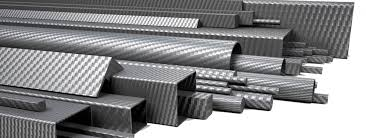
Connect with an NQ expert to discuss your product needs and get started on your project.
Table of Contents
Toggle